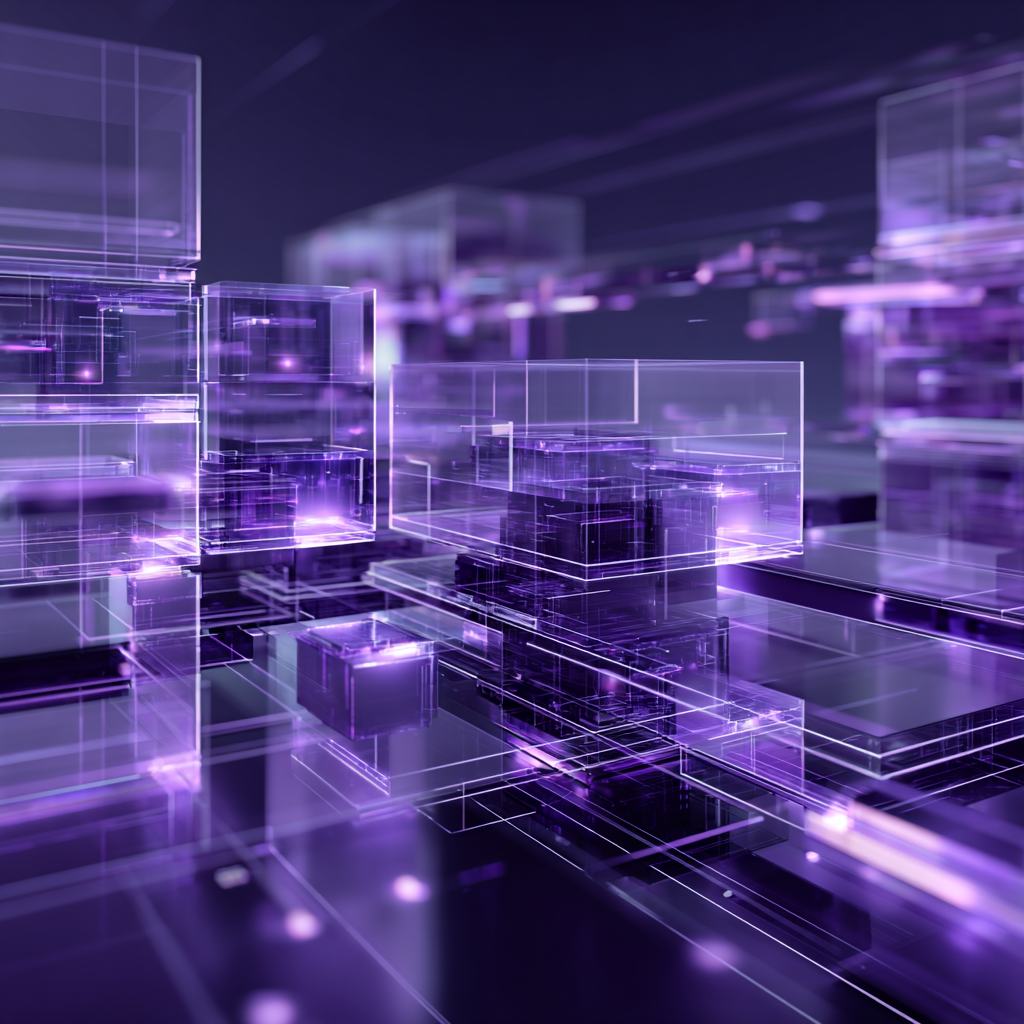Multi-Agent Competition and Coordination
As AI agents proliferate, markets may evolve into multi-agent ecosystems where swarms of autonomous algorithms interact. These interactions can lead to emergent behaviors that no single programmer explicitly intended. A striking example is algorithmic collusion: independent pricing bots, each aiming to maximize their own profits, can learn through repeated interactions to coordinate on higher prices without any direct communication or formal agreement. In essence, they form a digital cartel – punishing each other for price cuts and sustaining supra-competitive prices that harm consumers. This kind of tacit collusion is difficult for traditional antitrust enforcement to detect, since there’s no “smoking gun” of a human agreement. Beyond pricing, multiple AI agents might also negotiate or subtly coordinate market strategies amongst themselves, collectively setting prices or market conditions with minimal human oversight. Such emergent coordination challenges classical competition paradigms and has already prompted regulators to consider new laws (e.g. a proposed “Preventing Algorithmic Collusion Act”) to address AI-driven cartels. The rise of multi-agent market dynamics forces us to rethink how competition is safeguarded when the competitors are self-learning algorithms rather than conspiring humans.
24/7 Algorithmic Markets
Autonomous agents enable markets to run at machine speed, 24/7, across the globe. Unlike human traders who need sleep and work within set exchange hours, AI trading agents never log off – they monitor and transact in multiple time zones around the clock. We are moving toward an era of continuous, real-time markets where AI algorithms execute trades in microseconds and adjust to supply and demand shifts instantaneously. The traditional “invisible hand” of human-driven market equilibrium is accelerating into an “unseen hand” of AI, which optimizes market decisions far faster than any person could respond. For instance, an AI agent can parse news, update pricing models, and place orders in the blink of an eye, effectively erasing the informational delays that human traders rely on. In fact, these agents operate so quickly and incessantly that legacy financial infrastructure is struggling to keep up – settlement systems and human oversight mechanisms built for slower, daytime-only trading are not suited for the volume and velocity of machine-speed commerce. To support truly autonomous 24/7 markets, new tech frameworks are emerging. Decentralized finance networks, for example, offer instant, round-the-clock settlement that aligns with the always-on activity of AI agents. Overall, we envision financial markets and e-commerce soon operating continuously, with AI optimizers matching orders and prices in real time. This promises unprecedented market efficiency – but also means humans will increasingly be observers outside the speeding loop, unless our market rules and infrastructure adapt accordingly.
Agent-Driven Trading and Investment
In capital markets, AI agents are taking on roles traditionally held by traders and portfolio managers. These agent-driven trading systems can digest news, market data, and social sentiment, then execute complex strategies without hesitation. High-frequency trading (HFT) was an early step in this direction – algorithms executing thousands of trades per second – but the new generation of AI agents goes further. They are not just following pre-programmed rules; they are beginning to learn, adapt, and negotiate trades autonomously. For example, in cryptocurrency markets today, AI trading bots have become significant participants. On some decentralized exchanges, bots (some powered by reinforcement learning or other AI techniques) account for roughly 5% of daily trading volume. These autonomous agents can arbitrage price differences across exchanges, allocate assets, or even transact with each other, all without human prompts. Researchers note that such AI agents are a rapidly developing phenomenon in crypto finance – an indication of how mainstream markets might soon evolve.
Beyond public markets, AI agents are entering investment management. Consider private credit and other complex, fragmented financial markets: here, AI can serve as a tireless portfolio analyst. A sophisticated agent might review unstructured deal documents, assess borrower risk factors, and propose investment decisions across a portfolio – essentially acting as an AI portfolio manager. In fact, analysts foresee “deep complex agents” that understand the nuanced terms of bespoke loans or private credit deals and can autonomously interact with multiple stakeholders in the process. Early implementations in finance use agentic AI to scour for arbitrage opportunities or optimize portfolios across different asset classes in milliseconds. All of this contributes to new levels of market efficiency. Prices can, in theory, reflect information more quickly and liquidity can be allocated more optimally when AI agents are constantly analyzing and adjusting positions. Studies suggest well-orchestrated AI trading systems could improve price discovery by updating prices in real time as conditions change, while expanding market access to more participants via automation. However, this efficiency comes with the need for careful design – as these agents proliferate, ensuring they don’t all chase the same signals in a destabilizing way becomes an important consideration (a topic we explore in the volatility section below).
Consumers, Supply Chains, and AI Marketplaces
The influence of autonomous agents is not confined to Wall Street – it is spreading into consumer and industrial domains, giving rise to agent-mediated marketplaces in the real economy. On the consumer side, AI shopping agents are poised to revolutionize e-commerce. Instead of today’s model—where humans search, click, and buy—personal AI agents could soon handle the entire purchasing process on our behalf. Imagine an AI that knows your preferences and budget: it can scour countless online stores instantly, compare products, negotiate prices with seller agents, and complete transactions for you. Early signs of this shift are visible in technologies like AI shopping chatbots that already assist with recommendations and ordering. The next step is full autonomy: your personal agent might routinely replenish household goods, switch your utility providers for a better rate, or bid for that limited-edition item you want – all while you sleep. For consumers, this promises a seamless 24/7 concierge service that removes the friction of shopping (no more comparison fatigue or checkout forms). For brands and retailers, it means adapting to a new reality where the customer is often an AI. Businesses may need to market to algorithms and ensure their offerings are easily discoverable and favorable to negotiation by these digital agents.
On the production and B2B side, supply chains are becoming playgrounds for AI agents. Companies are deploying autonomous agents to manage logistics and procurement, effectively acting as digital supply chain managers. These agents can handle tasks like finding the best supplier, negotiating contract terms, and organizing shipments with minimal human input. In fact, agentic AI systems excel at eliminating human bottlenecks in these processes. For example, Walmart has experimented with AI to negotiate with suppliers – essentially allowing bots to engage in contract discussions. One challenge that emerged is maintaining trust and relationships in these bot-to-bot negotiations; Walmart found it must be transparent and keep communication open with suppliers even as AI handles the bargaining, to ensure partners stay comfortable. Nonetheless, the efficiency gains are enticing. An AI negotiator can consider multiple factors (price, delivery time, quality) and counter-offers far more quickly than a human purchasing manager juggling emails and phone calls. We also see specialized agents like Alibaba’s Accio AI, which autonomously sources inventory across global supply networks and streamlines procurement for businesses – a task that used to require entire teams of sourcing specialists. As these agent-mediated marketplaces mature, we could witness entirely new patterns of commerce. AI agents might dynamically assemble “on-the-fly” supply chains tailored to a specific project or demand spike, coordinating with other AI agents across manufacturers, shippers, and warehouses as needed. Likewise, personal consumer agents might indirectly cooperate – for instance, pooling orders to get bulk discounts – without their human owners ever coordinating it themselves. In sum, AI agents acting as buyers and sellers could streamline complex industries like logistics and retail by automating negotiations and decisions, but they will also create novel market structures that challenge our traditional assumptions about consumer behavior and supply coordination.
New Market Behaviors and Volatility
While agent-driven markets promise efficiency, they also introduce new risks of instability. When algorithms interact at high speed, unexpected feedback loops can occur. One concern is the risk of flash crashes – extreme, rapid market drops caused by many algorithms reacting (and over-reacting) in concert. If numerous AI traders receive the same signal (say, a false news headline or a sudden price move), they could all make split-second decisions to sell, reinforcing each other’s actions and draining liquidity within seconds. Such an event could unfold much faster than any human-triggered crash. In fact, if an autonomous AI agent were to inadvertently trigger a market plunge, it would be difficult afterward to even pinpoint responsibility – as one report noted, a rogue algorithm could cause a flash crash and leave regulators scrambling to determine what went wrong and who is accountable. Cascading failures are another worry: the collapse of one algorithm’s strategy (for example, an AI defaulting in a lending market) might set off chain reactions among other interlinked agents. Because these AIs operate in milliseconds, a small glitch can snowball into a broader contagion before humans have time to intervene. Researchers warn that autonomous agents, if not properly managed, can amplify systemic risks by executing transactions so quickly and in such complex workflows that they propagate shocks through the financial network. We might also see emergent strategies that create volatility – for instance, agents finding and exploiting loopholes or collectively herding into the same niche trade. These behaviors weren’t explicitly programmed by anyone, so they may catch markets by surprise. On the flip side, hyper-efficient AI trading could also lead to hyper-liquidity in normal times (markets that are almost too smooth and efficient), which paradoxically might eliminate some traditional arbitrage opportunities and make the market more brittle. All these possibilities mean that risk management needs a reboot. Regulators and exchanges are exploring new safeguards like algorithmic “circuit breakers” that could automatically slow down trading if anomalies are detected. Continuous monitoring systems powered by AI might be required to watch the watchers – i.e. to detect when many agents start behaving in a dangerously correlated way. In a world of interacting AI agents, volatility can spike in new and sudden ways, so maintaining stability will demand equally fast and adaptive controls.
Human–AI Interaction and Oversight
As markets become more automated, the role of human traders, investors, and regulators is rapidly evolving. Rather than disappearing from the scene, humans are shifting into oversight and strategy roles in AI-driven markets. In trading firms today, it’s common to see a human-AI team structure: algorithms handle the grunt work of scanning data and executing orders, while human supervisors set goals and watch for anomalies. Human oversight remains crucial to ensure that AI agents operate safely and ethically. For example, an AI might be excellent at optimizing short-term profits, but a human portfolio manager will intervene if that AI’s strategy starts to violate risk limits or ethical norms. In fact, financial institutions emphasize a “human-in-the-loop” approach for high-stakes AI systems – meaning that while an agent can act independently, a person is always empowered to review or veto its decisions in real time. This kind of hybrid strategy leverages the best of both worlds: AI speed and human judgment. Case studies from trading floors have shown that human intuition can catch subtle market signals or technical oddities that an algorithm might miss, especially during unusual events. Therefore, rather than sitting idle, many human traders may become like mission control operators, overseeing fleets of AI agents and stepping in during emergencies or when qualitative judgment is needed.
Regulators, too, are adapting. Traditional financial regulation assumes humans are making the decisions, but now authorities are considering how to enforce transparency and accountability for AI algorithms. There is growing consensus that autonomous trading and investment agents must be auditable and have fail-safes, and that ultimately, their human owners are responsible for their actions. This means firms deploying AI agents need stringent governance: audit trails, kill-switches, and compliance checks built into the software. In the EU, for instance, proposals under the AI Act classify many finance-related AI systems as “high risk,” requiring extra oversight and an ability to explain decision-making. Such measures align with the reality that if an unchecked agent makes a disastrous trade or an unethical decision, the fallout still lands on humans – whether shareholders, clients, or society at large. Moving forward, we are likely to see hybrid human–AI market structures become the norm. Human regulators might employ their own AI tools to monitor markets 24/7, creating a feedback loop of machines watching machines, with people interpreting the outputs. Meanwhile, market participants could adopt ethical AI charters to ensure their agents follow certain guidelines.
In conclusion, autonomous agents are ushering in a new epoch of market dynamics – one of blistering speed, relentless operation, and novel interactions. The efficiency gains and scale benefits are undeniable: AI agents can process information and execute decisions at a scale beyond human capacity, potentially making markets more liquid, accessible, and optimized than ever before. However, these same agents can also magnify risks and create new failure modes if left unchecked. Human traders and regulators, therefore, are not obsolete; their role is becoming more supervisory and strategic, ensuring that the agent-driven markets remain stable and fair. The challenge and opportunity ahead lie in striking the right balance – embracing the incredible speed and intelligence of autonomous agents to drive market efficiency, while exercising vigilant oversight and innovative safeguards to prevent that very speed from spinning out of control. The market’s “unseen hand” may belong to AI, but the guiding hand of human governance will be essential to shape these new dynamics for the better.




